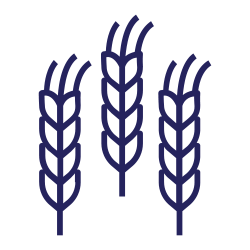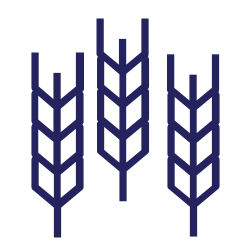Application and evaluation of genomic selection for improving FHB resistance and lowering DON accumulation in two-row malting barley
Crop Types
Collaborating Locations
University of ManitobaBackground
This project was undertaken to investigate potential of using new breeding methodologies to continue and support progress on efforts to incorporate FHB resistance in barley. Genomic selection (GS) models are limited primarily by the quality of the phenotypic data supplied and inputted into the prediction model. As the number of markers becomes increasingly available, molecular data can far exceed limits of individual genotypes (breeding lines). The genomic panel assembled for this study was carefully designed with this consideration, employing a large collection of diverse barley lines (n=400) pre-selected based on prior knowledge of differential FHB reaction. Lines were chosen with consideration of all western Canadian breeding programs, with various degrees of representation. The assembled panel of genotypes was evaluated in FHB nurseries under replication (n=2) in three different environments in Manitoba (Brandon, Carberry, and Carman). Grain spawn was used at Brandon and Carberry, whereas plots were inoculated by macroconidia at Carman. For each location plots were scored for FHB on a 0-5 scale (Legge, 2004), height, and heading date (Brandon and Carberry). Genomic resources are becoming increasingly accessible due to fast-paced development of new technologies. During course of this study, a new technology became available to the barley genetics community. An international consortium was formed, and a development agreement was put in place with Illumina to produce a 50K SNP microarray (Bayer et al. 2017). Access to this technology increased marker coverage 5X fold over previous barley Illumina Golden Gate platform (9K microarray). While this project had specific goals related to investigation and application of genome-wide markers to develop disease resistance, it also provided an opportunity for evaluating use of the technology in reference to Canadian germplasm.
Objectives
- Evaluate accuracy and efficiency of genomic selection as a new method to breed for FHB resistance in Canadian two-row malting barley.
Key Findings
This project made use of molecular markers which covered the immense barley genome (5 Gb, or approximately 2X the size human genome) for use in genomic prediction of FHB and DON in two-row barley. A large genomic panel was assembled using elite breeding materials from western Canadian breeding programs with addition of genetics from additional diversified sources. This set was evaluated for FHB reaction and DON content in 3 FHB nurseries across Manitoba over 2 years. Using these genome-wide molecular markers, moderate prediction values for FHB and DON were possible. While field evaluation will always be required to verify the realized level of resistance in breeding materials, this project demonstrated that the Illumina 50K SNP barley microarray is a useful tool for Canadian barley breeders to make early selection with genomic information alone.
Key Takeaways
- A large data set was generated with head-to-head analysis of FHB/ DON resistance for historic, elite breeding materials and varieties that represents valuable information resource for design of crosses and ongoing breeding activities of variety improvement.
- A new Illumina iSelect microarray (50K SNPs) was evaluated which demonstrated high applicability for use in Canadian breeding programs.
- Genome-wide markers applied in genomic models demonstrate moderate predictive for FHB and DON content. Genomic selection may show promise as a useful method for breeders to enhance FHB resistance in segregating populations.
- The genotyping data generated for the collection of barley genotypes used in this project could be used to study other important traits.
- Genomic prediction for DON appeared to be slightly more variable than that for FHB, which may correspond to the difficulties associated in measuring this character, which requires very specialized chemistry for detection at the PPM scale.















